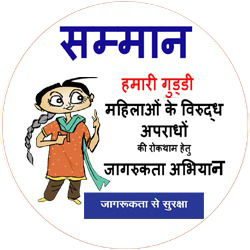Madhya Pradesh Police’s Initiative
‘Swayam Siddha’- Empowering Girls to Protect Themselves and Speak Up Against Violence

The Need for Self-Defense Training for Girls and Women
Girls and women often become victims of violence and harassment due to their perceived vulnerability. Self-defense training equips them with the necessary skills and techniques to defend themselves in case of an attack. Such training also creates awareness among girls and women about their safety and encourages them to speak up against any form of violence or harassment.
Massive Outreach Efforts by Madhya Pradesh Police
The Madhya Pradesh Police’s outreach efforts ensure the maximum number of students receive training. The police have organized camps in all districts of the state, with the highest number of camps held in the Raisen district. Over 22,819 students were trained in the district during the eight months of the program. The police’s efforts have created awareness and built confidence among students, enabling them to lead a life free from fear and harassment.
Practice escaping techniques from common holds, such as a wrist grab, hair grab, or bear hug!
Wrist grab – If someone grabs your wrist, rotate your arm towards the attacker’s thumb, twist your arm in the opposite direction, and pull your wrist out of their grip.
Hair grab – If someone grabs your hair, grab their wrist with both hands and pull it towards your head, while simultaneously bending down and pulling your hair towards the ground. This will cause the attacker to lose their balance and release their grip.
Bear hug – If someone grabs you from behind in a bear hug, drop your weight and bend your knees, while simultaneously raising your arms up and then bringing them down quickly to create space between you and the attacker. Then, turn towards the attacker’s side and strike them with your elbow or knee.
Self-defense techniques to mug-up!
- Palm strike – A palm strike involves using the heel of your palm to strike the attacker’s nose or chin, causing pain and
- Knee strike – A knee strike involves lifting your knee to strike the attacker’s groin or stomach, which can cause significant pain and incapacitate the
- Elbow strike – An elbow strike involves striking the attacker’s face or collarbone with your elbow, which can cause injury and create an opportunity to
- Front kick – A front kick involves kicking the attacker in the stomach or groin with the ball of your foot, which can cause pain and create distance between you and the
- Eye gouge – An eye gouge involves using your fingers to poke or jab the attacker’s eyes, which can cause pain and temporary blindness, giving you time to
- Escape holds – Techniques to escape from common holds, such as a wrist grab, hair grab, or bear hug, can also be effective in protecting.
Eve-teasing and rooted in power.
Understanding the Root Causes of Harassment and Assault
similar incidents of harassment and assault are often imbalances and social norms that reinforce gender.
stereotypes. These behaviors can also be a result of the perpetrator’s desire to assert control over the victim or to display their dominance.
In some cases, the perpetrator may have been exposed to toxic masculinity or may have experienced violence or abuse themselves, leading them to believe that such behaviors are acceptable.
Additionally, cultural and societal factors such as objectification of women, victim blaming, and a lack of consequences for perpetrators can contribute to the prevalence of such incidents.
It is important to address these underlying causes and work towards creating a culture that values respect and equality for all genders. This can be achieved through education, awareness campaigns, and holding perpetrators accountable for their actions.
Parenting Tips to Break Gender Stereotypes and Ensure the Safety of Females!
- Encourage Gender-Neutral Activities: Encourage your child to pursue activities that are not based on gender This can help break down the barriers and provide equal opportunities for boys and girls.
- Teach Consent: Teach your child about the importance of consent in any relationship or interaction. Start early and explain that no means no and that it’s important to respect another person’s
- Educate About Personal Safety: Educate your child about personal safety, such as not talking to strangers, avoiding risky situations, and being aware of their
- Encourage Assertiveness: Encourage your child, especially your daughter, to be assertive and speak up for themselves when they feel uncomfortable or
- Model Positive Behaviors: As a parent, model positive behaviors and attitudes towards Show respect, kindness, and empathy towards women in your life, including your spouse, family members, and friends.





